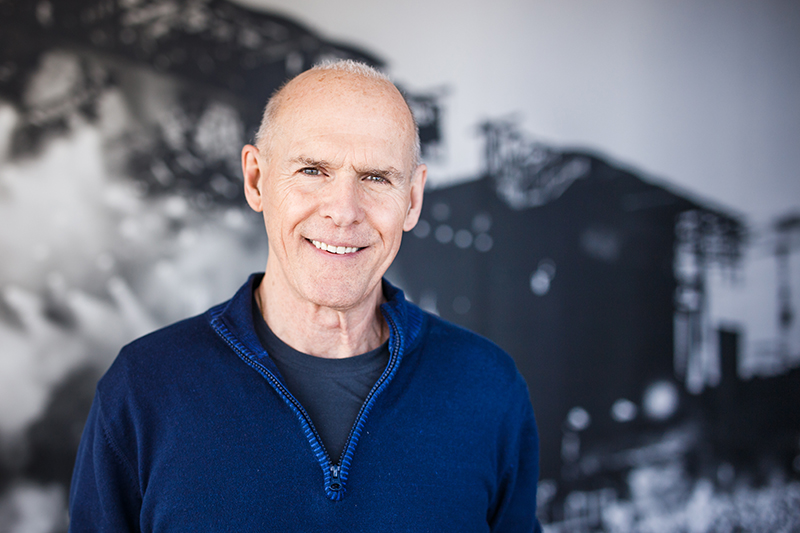
Stageline Founder is Making Staging More Efficient and Eco-Friendly
I’m sitting in Yvan Miron’s office as he tells his story, and on cue, the clear Québec sky darkens and unleashes a vicious rain. Miron laughs and shakes his head, points out the window, and says, “See? When I decided to do folk festivals and other outdoor events, it would suddenly rain hard, just like this!” After a tutorial on how the region is at the crossroads of several weather patterns and thus prone to these climate outbursts, he returns to his story: “Outdoor events were a huge challenge here. Promoters and festival organizers would spend serious money and bet everything on the day being a good one. So, I get out there and become one of these organizers. I can take care of the artist, the lighting, and the staging — but not the weather.” Miron explains the concept of a “Canadian rain check” which, in the early 1980s was not merely putting off the event to the next weekend or even next day. “If the weather forecast was for rain, sometimes all the gear had to be moved inside; but if it suddenly cleared a little later, we were told to move the gear back outside and make sure the show happened if we wanted to get paid.” After one especially stressful such day, “I said to a friend who worked with me that if we didn’t find a solution to this, we would turn ourselves into nervous wrecks before we got to be 40.”

Miron’s determination to provide a safer, less expensive, less labor-intensive staging alternative was, and is, unwavering. Today his Stage Line mobile stages are in 45 countries and used in over 20,000 events a year. He ignores current industry safety standards because he believes they are too lax, and instead creates stages that stand up to the much stricter permanent building codes. Miron is rightly proud to point out that his commitment to safety has resulted in “not a single casualty. If regulations say it needs to take a ton, we build it to take two tons, always going with a 2:1 ratio. And we build them to withstand 150 m.p.h. wind.” He’s done it all while being a fierce environmentalist, creating products that have a smaller carbon footprint than traditional staging. And now this inspiring innovator is adding the 2019 Parnelli Visionary Award to all the other honors he’s received, which include five Parnelli Awards, an Architectural Excellence Award and many certificates, patents and Canadian honors.
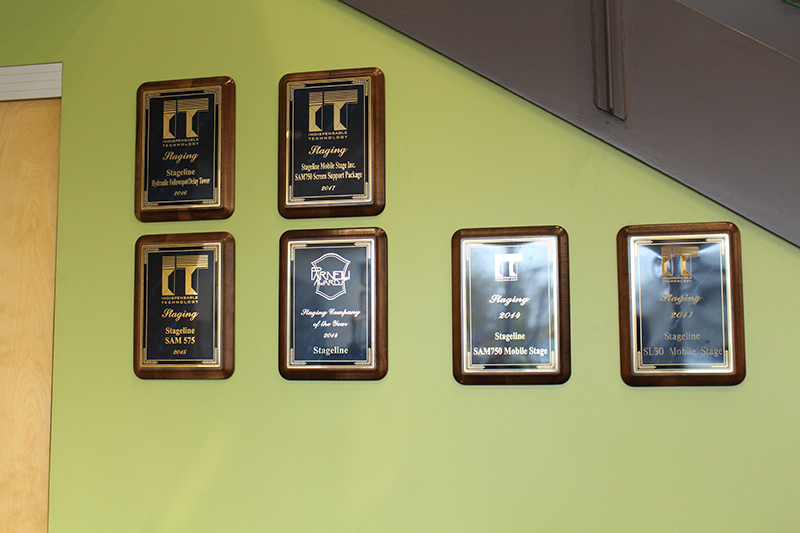
“I have known Yvan for many years and have had the pleasure of visiting his world-class facility, where I saw first-hand the quality of work done by him and his team,” says Peter Hendrickson of Tour Tech East, who is also a Parnelli Board of Advisor member. “He surrounds himself with positive and knowledgeable people that have helped him grow that business into becoming a true leader in our industry. He had the vision to see the need for portable stages that can be erected and dismantled in short periods of time with minimal labor costs. Many companies have copied his product; however, it is still a copy, and when describing portable stages, people call them ‘Stageline-type’ stages. It’s like what ‘‘Kleenex’ did for tissue paper and ‘Xerox’ did for photocopying.”
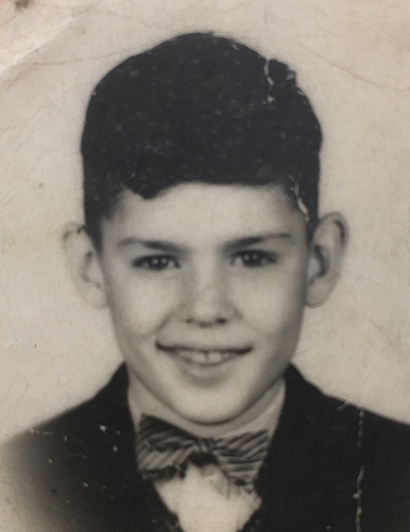
A Rich Heritage
Miron was born in Montreal, and his lineage is filled with craftsmen and builders going back to 1649, when one ancestor, a carpenter, emmigrated from France to Quebec. If you’re lucky enough to take a drive around Montreal with him, he’ll pause and point out buildings and churches that his grandfather helped build. His father worked for the city as a tinsmith. The men on his mother’s side were also mechanically inclined. “They built carriages and operated a fleet of horse-drawn carriages … you know, MOBILE carriages,” he winks. He headed off to college where he started playing guitar, writing songs and playing in bands. “I was just having fun, playing in the cafes.”
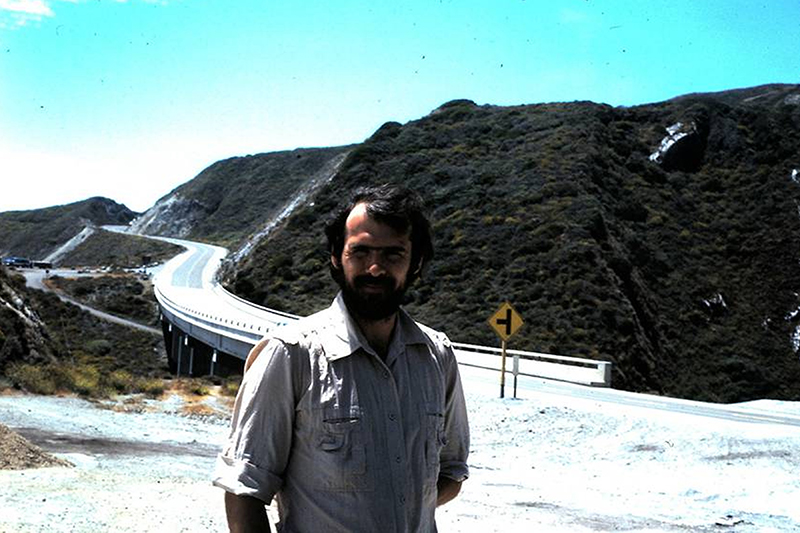
In his early 20s, Miron decided to travel the world — hiking, communing with nature and experiencing different cultures. “I learned to appreciate different values,” he says of his travels. “The ability to appreciate others’ values helped establish our stages in other countries. For example, understanding that those from Saudi Arabia need to pray in certain ways at certain times was a helpful learning experience.” His travels also happened to put him at specific places at specific times. Yes, he was there for the Bath Festival (England’s Woodstock), and he ended up in San Francisco during the “summer of love” — 1967. He returned to Montreal and hooked up with a Celtic Irish band called Barde, but not as a musician. “I told them I’d help them, but only if I make the calls on how they go on stage and how they record,” he says. “We started touring and playing festivals with me as their manager.” By 1975, he had started two production companies, Barde Productions and Les Productions du Roi Dagobert. “Back in those days, we were all young guys, and the industry wasn’t particularly sophisticated here in Quebec,” he says. His experience with the weather turned him back into being a “good student” who went to work on figuring out a better way. “When I looked around and saw these Genie Towers and improvised wobbly stages, I thought, surely we can do better.”

Marius Chouinard met Miron in the 1970s when he was working sound at many of the shows Miron was also working. “It was the days of plywood [stages],” says Chouinard. They often worked side-by-side, with Miron hiring Chouinard as an on-site technical director in the 1980s. Chouinard witnessed Miron showing up to an event with his “#1” — his first mobile stage. Chouinard would go to work for the new Stageline company in 1988 when Miron was working on “Stage #3,” and has been a key associate until recently, when he turned 65 and curtailed his work responsibilities. “The big challenge in creating mobile stages was being able to put an entire stage on a trailer without going over weight regulations,” he says. “Yvan figured out how to be as light as possible on the road but as heavy as possible on the site, so it could withstand high winds and rigging loads.” It was a balancing act, but the payoff was huge: If a stage he built could pass inspection to travel on any road, it didn’t need additional regulations at the site. “Yvan is ambitious and is a good mix of instinct and intelligence. Sometimes a leader can let emotions sway in one direction or another, but he doesn’t act on emotions. He takes the ideas of everyone, making it a team effort. Everybody here has a say.”
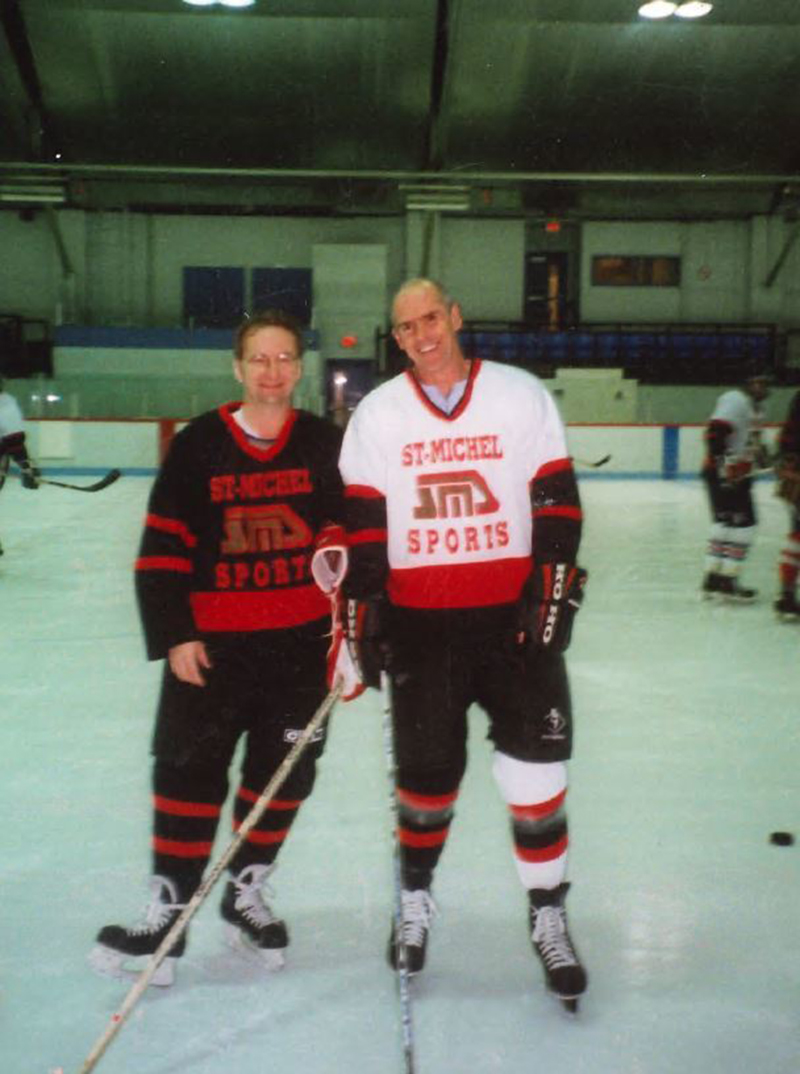
“Marius and I and the team argue a lot, because I always want it to be simple, and I don’t want a stage to require tools or extra equipment to set up,” Miron says. “The stage is the first equipment to get on site and the last one to go, and more often than not, the stage has to be set up and moved out of the site on the same day. It can be a lot of work for most of the folks out there. The idea is to replace all the work of a constructed stage that is erected from the ground up, no matter the size, by preassembled staging equipment that unfolds hydraulically. This reduces the need for labor, with a reduction of 75 percent to 90 percent in time and crew.”
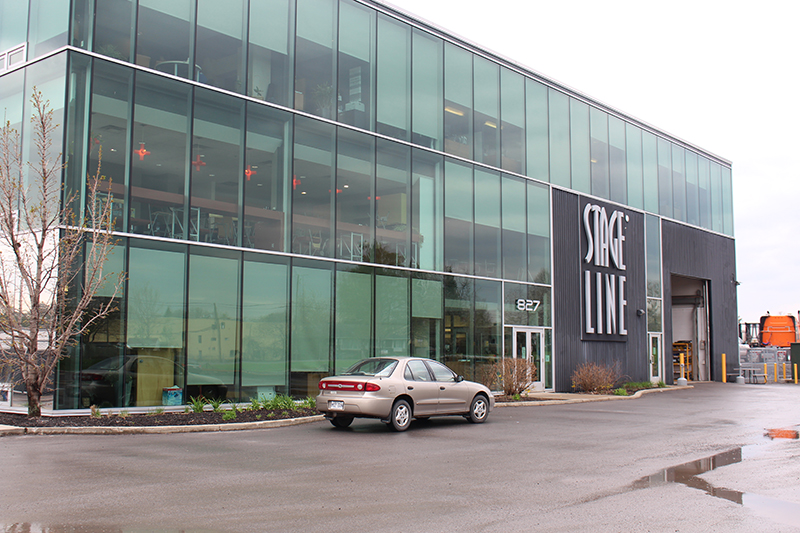
Their Norms: Not Normal
“We design for wind criteria based on the building codes, and no one else in the industry does that,” Miron says. “A few years ago, the industry proposed the ESTA norm, and we never agreed to it because we thought it was way too low.” In addition to safety, Stageline products are known for their efficacy. When he started building the mobile stages in the 1980s, he did all the outdoor symphony events in Montreal, events that would attract large crowds in city parks. The mayor at the time had previously been the chief gardener of Montreal and was thus protective of the turf and trees. When the event was finished, all the branches of the trees needed to be intact, and Stage Line was instructed to not turn the park into a muddy field. “We learned how to transfer the weight of the stage, so we would minimize the impact of the soil. This technology ended up also saving labor in addition to saving serious restoration costs.”
By 1992, he had put together several working mobile stages and he found clients, including some especially skeptical ones. A promoter in Vermont called to have Stageline be part of a Willie Nelson concert. Miron and his team pulled up with something they hadn’t seen before — a mobile stage — and questions were asked. “The technical director asked, ‘What is this?’ He tried to say he can’t rig anything on it. I showed him how. I answered all his questions, and then he said, ‘Well we haven’t seen anything like this,’ but we did the show and, sure enough, it worked.”
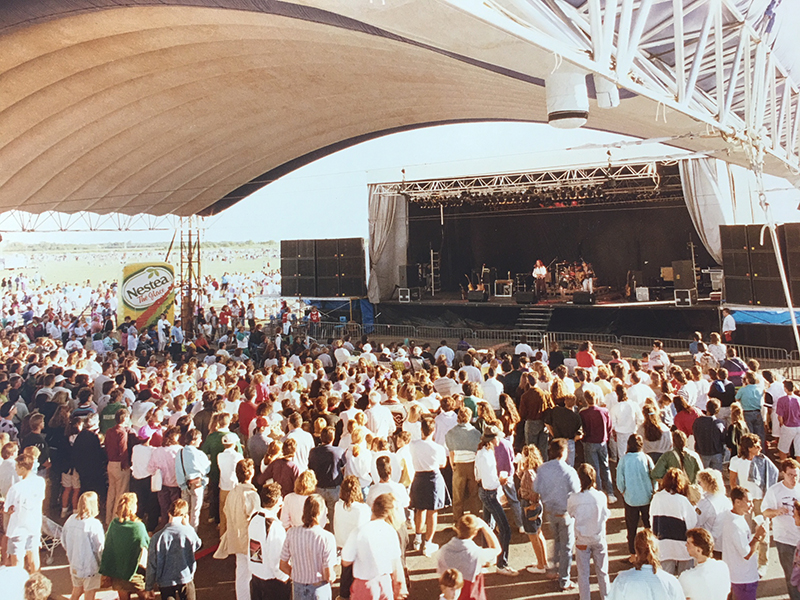
Like any radical idea, it was an uphill battle to get promoters and live event producers to consider the Stageline concept. He was betting that an industry with established habits and practices could ultimately be open-minded to change. “I had disruptive technology,” he says. “I had people come up and say, ‘We don’t like you, you are putting our friends out of work.’ But I knew, as with much of new technology, it’s going to happen whether someone wants it to or not.” And instinctively, he knew that to be a successful change agent, Stageline needed to do more than just offer a “viable alternative” to the accepted ways of setting up for events: Stageline needed to overwhelm with benefits and advantages. So, he considered every detail — where the speakers would go, where the lighting would hang. He created redundancy in the systems to make the stages strong, reliable and easy. Anything needed to set up came with the stage.
Miron has always brought in talent to help design his products, which is always followed by extensive testing. “From the earliest days to today, with people like Marius and so many others, the chain of expertise has never been broken. You don’t do it for the money. Maybe it was gutsy that one year I spent 40 percent of my revenue on R&D — not many people would do that! I could have bought houses in Miami, but I’d rather invest in hydraulics than property.” And he did. Over the years, he continually developed new stages and improved the models already on the market, a process that continues to today.
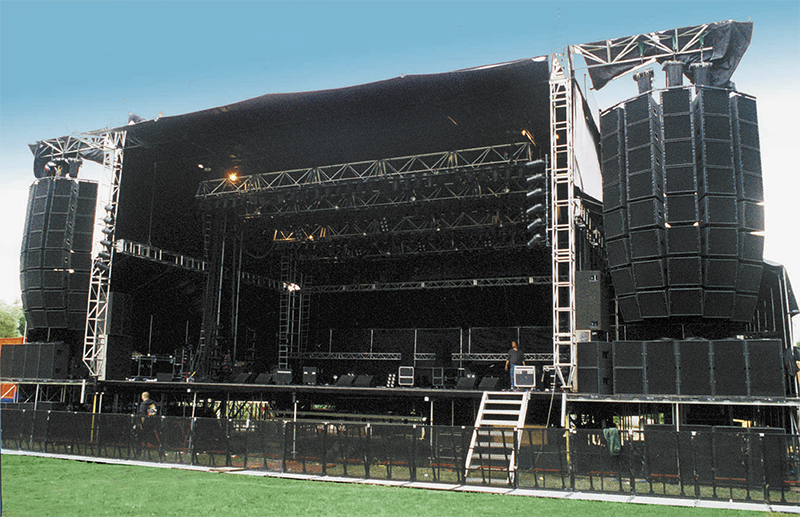
Expanding Stages, Markets
Miron has always desired to serve the entire market, catering not only small and medium events, but large ones, too. That meant creating bigger stages. In 1994, the first SAM 550 was built and was actually named in honor for the market it was intended for: Uncle Sam, the iconic symbol of the U.S. “It was a big step, because the trend was for those big 60-by-40-foot stages,” Chouinard explains. But the law didn’t allow any trailer on the road to be longer than 53 feet. The team took a chance and created the SAM as 50 by 40 feet, and that turned out to be a wise move. “Yes, it was a little smaller, but common sense prevailed, and when promoters/organizers saw how much they could save in money with it, that setting this up takes four hours instead of up to the three days a traditional large stage takes, they choose our option.”
Offering stages for spaces not set up for them has always been a point of pride for Miron. In 2002, the Commonwealth games were being held in Manchester, in the U.K., and the organizers were planning to shut down the center square for a week to build a traditional stage. Then they heard about a Stageline SAM that was owned by the British company Star Hire. “They got a SAM there at 5 a.m. the day of the event, and by 7 p.m., everything was out, and they only needed six guys to do it all,” Miron says. They have since added weather protection tarps that can roll up or down in minutes, eliminating a giant sail in a windy field. “The SAM 750 is a large 70-by-50-feet stage that extends up to 130 feet with covered wings. Not only did we have our engineers test our calculations, we hired an engineer who specialized in airflow calculations to also run tests. We use computer analysis, a finite element computer program, and we calculate based on the IBC and NBC Building Codes.”
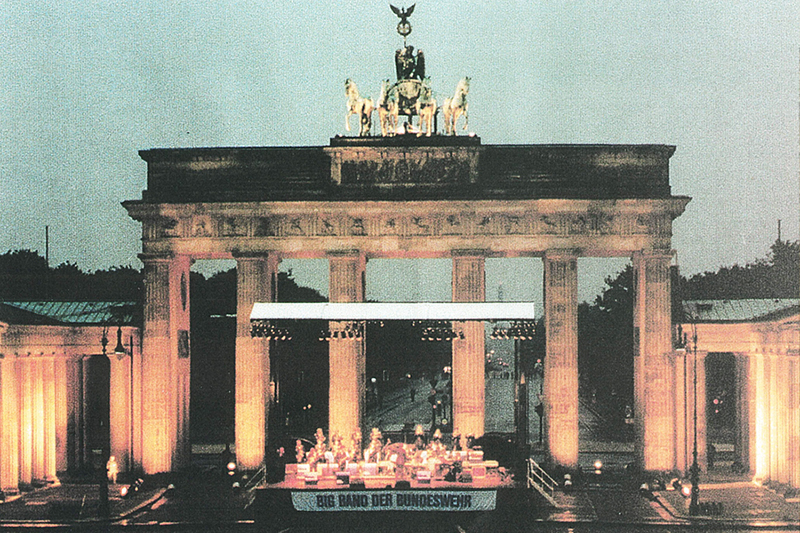
“We started Osheaga [Montreal’s Music and Arts Festival] 13 years ago, and from the beginning, Yvan and his team were able to handle everything we could ask for,” says Nick Farkas of Evenko, a Quebec-based promoter and producer. “When we graduated to needing larger stages, he came to us with the design for the 750. I remember looking at the plans and saying that it looks amazing, but can it actually be built? And of course, they built it, and when completed it was even more impressive than I could have imagined. I love watching people’s reaction when they step on the deck for the first time. The 750 has been a game-changer for the industry and a tribute to the man behind it. I’m always looking forward to seeing what they will come up with next.”
With staging products applicable to almost all outdoor live event markets, the next logical item Stageline needed to tackle was a sleek alternative to the bulky towers needed for follow spots and to hang audio delay stacks or video screens (hence finally getting around to dealing with those towers that were an eyesore to him from his earliest days). Traditionally, these structures blocked sightlines. Evenko came to Stageline to see if there was a better solution. “They didn’t want massive concrete blocks as ballast with wires running down, and they wanted a thin structure with a small footprint,” Miron says. Once again, his team of designers and engineers wanted a system that was self-supporting. They came up with the Mobile Tower, which takes four technicians and four hours to set up while eliminating the blockage of sightlines for people behind it. “Our goal was to make these towers as timeless as possible and to look nice. We can safely hang 10,000 pounds from a single tower while remaining unobtrusive to the audience.”
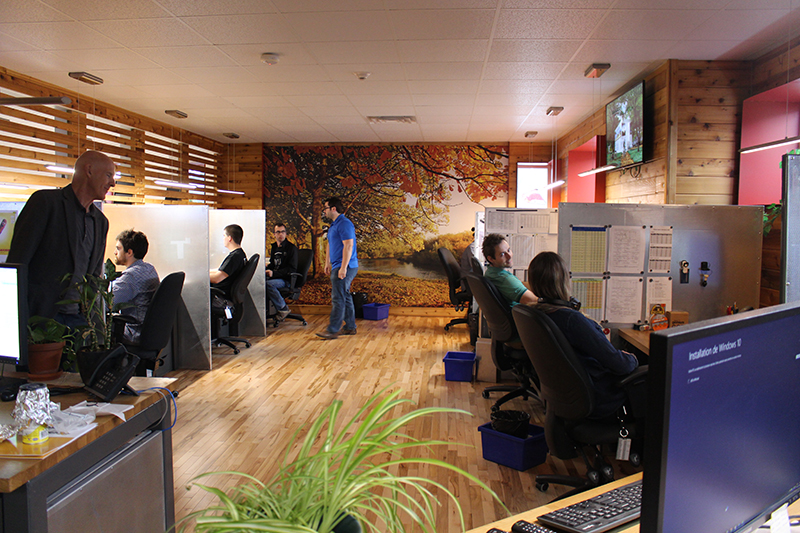
Eco-Friendly, Associate-Friendly
Back in his office, it’s noted that his walls are filled with beautiful outdoor photos. As it turns out, he took all of them but one himself. “When I was young, I spent summers in a camp that taught me to appreciate nature.” In 1972, he was invited to attend a Youth International Conference on the Environment. “It was fantastic. I met people from all over the world, and the topics were extremely interesting. It always stayed with me.” One of the leaders at that conference told him, “You can’t treat the earth like an open bar without having a hangover the next day.” “That stuck with me,” he says. He continues to be an avid hiker and bicyclists, but perhaps the biggest testament to his commitment to the environment is the new facility he built, where most of the stage manufacturing takes place. The new building began with setting pipes 600 feet down into a pocket of geothermal energy, and that saves 68 percent of energy that a traditional facility the same size would use. There is a pragmatic aspect to this as well, as Montreal winters are cold and long, and so an environmentally progressive manufacturing facility is also financially wise. “We knew that our energy costs would soar in a place with such high ceilings, so we were willing to work to build in efficiency.” All his products are built with the environment in mind. The mobile stages he builds last an average of 30 years, and when it is finally ready to be put out to pasture, 80 percent of the stage is recyclable.

He also cares deeply for those who have worked by his side and has always understood the importance of a strong team. Today his R&D department and is headed by Jonathan Doucet, who leads a team of 14. “There is so much engineering that goes into one of our mobile stages, so I want the top guys in structural, mechanical, transportation and hydraulics engineering.” This year, he also decided to make partners of the key members of the team, restructuring the company so they could receive shares in the company. Now all the directors are partners.
Miron still lives close to where he grew up in a relatively modest apartment house across from a park that he likes to point out has “over 100 trees over 100 years old.” And while he is far from retiring, as he approaches 70, he is looking at making some changes. He plans to step down as general manager soon, handing more of the day-to-day responsibilities of the company off to Pierre-Luc Rompré, currently director of sales and rentals. He will remain active in product development. “Stageline is a concept of community,” Miron says. “It’s not the story of just one man. There are 175 people working with us worldwide, and I’ve been lucky to be surrounded by so many good people. I’m less of a great musician, and more of a conductor.”
Yvan Miron will receive the Parnelli Visionary award at the annual gala set for Jan. 25, 2019 in Anaheim, CA. For more information and to reserve your seat (or table), go to www.parnelliawards.com.


